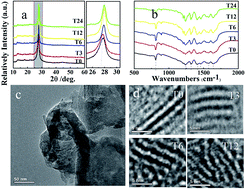Structural distortion induced ferromagnetism in two-dimensional metal-free graphitic-C3N4 nanosheets
Abstract
With the assistance of innovative approaches driven by nanotechnology, engineering 2D materials into designed architectures or desired structures could tailor the electronic structure into an appropriate energy band structure, tuning the properties of the materials to be a predictable manner. Here we systematically studied the role that the structural distortion plays in the magnetism by taking two-dimensional metal-free graphitic-C3N4 as an example. Through the controllable structural distortion engineering introduced by post-heat-treatment in the experiment, the ferromagnetism is observed in graphitic-C3N4 nanosheets, which benefits from the electronic structural deformation, showing intriguing structural distortion-dependent ferromagnetism. This study not only offers new insight into the in-depth understanding of the structural distortion effect on the magnetism, but also provides a new way for searching and designing new magnetic materials.



 Please wait while we load your content...
Please wait while we load your content...